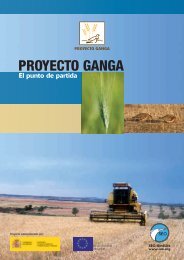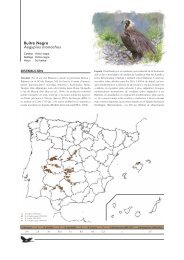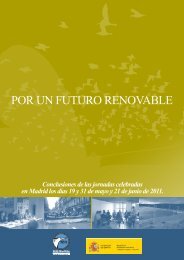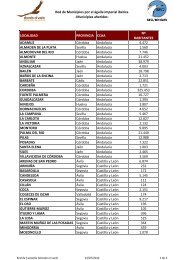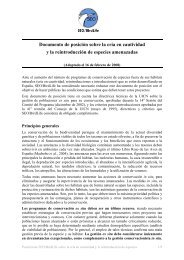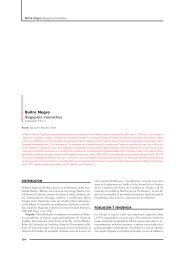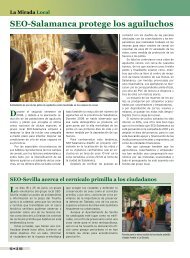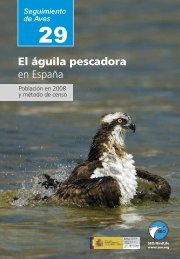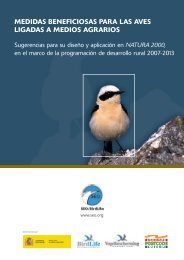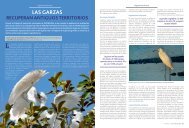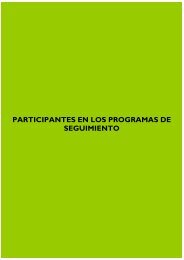La avutarda hubara - SEO/BirdLife
La avutarda hubara - SEO/BirdLife
La avutarda hubara - SEO/BirdLife
Create successful ePaper yourself
Turn your PDF publications into a flip-book with our unique Google optimized e-Paper software.
Summary<br />
SUMMARY<br />
This monograph presents information on the current situation of the Houbara<br />
Bustard Chlamydotis undulata fuertaventurae on the basis of the results of four<br />
general censuses carried out between 2004 and 2006, which have taken place in<br />
the framework of a LIFE Nature project implemented by <strong>SEO</strong>/<strong>BirdLife</strong> from<br />
2003 to 2007 (LIFE 03NAT/E/000046 “Conservation of the Houbara Bustard in<br />
the SPAs of the Canary Islands”). The censuses were aimed at setting up both<br />
the current population size and the population trend, taking the baseline on the<br />
results of the mid-1990s census coordinated by Dr. Aurelio Martín (University of<br />
<strong>La</strong> <strong>La</strong>guna). Consequently, the methodology applied for the mid-1990s census<br />
was also adopted for the mid-2000s one.<br />
The four counts were undertaken during the summer and winter periods for the<br />
species. The information on the study area was previously updated, and the<br />
locations occupied by the species were classified either as primary habitat (i.e.<br />
sites in good conservation status) o as secondary habitat (i.e. sites of low quality<br />
or partly degraded).<br />
The method used to count individuals consisted of multi-line transects in which<br />
a pre-defined track was walked along by observers separated 200 m from each<br />
other. Sampling was simultaneously undertaken on the two main Islands, and<br />
then in the reminding islets.<br />
Most of the transects were surveyed during the morning period of maximum<br />
activity for the species. In each census, 49 transects were studied that were distributed<br />
among the islands and islets as follows: 26-27 in Fuerteventura, 13-14<br />
in <strong>La</strong>nzarote, 4 in <strong>La</strong> Graciosa, 2 in Alegranza and 1 in Lobos. The global area<br />
covered by the itineraries varied between 204.7 and 206 km 2 , with Fuerteventura<br />
being the island with the largest prospected surface (134,8 and 137,3 km 2 ); 57-<br />
and 58-km 2 areas were surveyed in <strong>La</strong>nzarote.<br />
Houbara Bustards were observed in Fuerteventura, <strong>La</strong>nzarote and <strong>La</strong> Graciosa<br />
Islands, but were not detected in Lobos and Alegranza Islets. Looking at the<br />
number of individuals detected on each transect, a gradual increase between the<br />
first (December 2004) and the last (December 2006) counts has occurred, with<br />
the range of Houbara Bustard individuals being, respectively, 495-503 and 646-<br />
649. For the four censuses, the results have been above those of December 1994.<br />
Therefore, the fist conclusion drawn is that a population increase for the Houbara<br />
Bustard has occurred during the last decade.<br />
69



